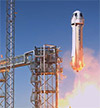International Location Report: A Solid Foundation for Economic Success in Canada
Further investment in job training, innovation, and infrastructure by the new government in Ottawa will serve to enhance Canada’s economic strengths.
Directory 2016
Among other things, the platform promises increased investment in job and skills training, much of it in provincial and territorial Labor Market Development Agreements, plus additional training funds for provinces and territories. The platform promises more investment to support clean technology producers and emerging cleantech manufacturing companies. It suggests a new Innovation Agenda supporting incubators and accelerators, plus more funding for the Industrial Research Assistance Program. And it proposes significant increases in infrastructure funding.
Whatever changes may come, Canada builds upon a solid foundation for business success and an economy that appears to be on the upswing once again. The first five months of 2015 revealed an economy contracting, but things turned around for three straight months after that, giving economists hope that sustainable growth has returned. According to the Conference Board of Canada, the mild recession was tied mostly to the energy sector, a big part of the Canadian economy that was hit by the crash in oil prices and a cutback in capital investment.
“The recession is now behind us, and the economy is expected to post solid growth for the second half of 2015,” the Conference Board reported in late October 2015. Looking ahead to 2016, “we expect economic growth to accelerate to a more respectable 2.3 percent, driven by a pickup in exports and steady consumer spending.”
The province of Alberta felt the brunt of the oil collapse particularly harshly. Its economy is strongly tied to petroleum products, which had helped create economic growth rates of 4 percent or more in years when the industry was healthier. Energy is big business in British Columbia, too, but its economy is insulated by its diversity. In any case, energy’s woes were painful for some parts of Canada and dinged the collective economic statistics. Nonetheless, the slowdown in the oil sector in British Columbia has the potential to benefit other sectors — a report toward the end of 2015 suggested the potential for more growth in the liquefied natural gas sector, which offers great potential for exports to Asia. The AltaCorp Capital report suggests that as many as four LNG terminals could be built on or near the West Coast of Canada, in some cases with the help of labor that the oil industry has idled.
Turbocharged Auto & Aero Sectors
Although Canadian energy industry news was mixed, economic activity in other areas appeared turbocharged. In particular, the automotive sector experienced a strong rebound. And good automotive news is a blessing for Ontario, which is as much an automotive hub as its U.S. neighbor, Michigan. Five major automakers assemble cars in Ontario, supported by hundreds of parts suppliers. The province hosts significant automotive research and development, too.
Beyond automotive, Ontario has a diverse and healthy business scene, including significant manufacturing presence in life sciences, aerospace, and food and beverages. It also is an information technology leader, and has one of the most thriving financial services sectors in the world. Even as the world’s economic picture continued to be cloudy, Ontario was adding jobs — 29,200 in October 2015 alone, and more than half a million since 2009. Manufacturing sales were up more than a percent in the first eight months of 2015, compared to a year before, and retail sales jumped more than 4 percent.
Thousands of jobs have been sparked by the province’s investment in public infrastructure, with a planned total of more than $130 billion over a decade and spread across everything from roads, bridges, and transit systems to schools and hospitals. The provincial government is finding a variety of creative ways to unlock that kind of infrastructure funding. For example, an initial public offering of shares in the Hydro One electricity transmission and distribution utility will generate about $2 billion for infrastructure spending.
Creative investment thinking also can be found in neighboring Quebec, where the provincial government recently announced a deal with aircraft-maker Bombardier to help finance its CSeries narrow-body jet program. Bombardier has been exploring options to fund development expenses, and the deal has the Quebec government taking on half of the cost. Bombardier is a significant part of the province’s aerospace sector; Quebec makes up about half of the Canadian aerospace industry’s sales.
Other prominent industries in Quebec include life sciences, including significant pharmaceutical R&D and manufacturing operations involving many of the industry’s biggest names. Quebec is active in ground transportation, food and agribusiness, and there’s also a healthy technology sector focused on such specialties as microelectronics, information technology, and multimedia.
Significant Technology Investments
British Columbia also lays claim to significant technology operations. The province has plenty of success stories to share, such as Mojio Inc., which has created a platform connecting cars to the Internet. Its hardware plugs into a car’s diagnostic port and ties in with GPS and its built-in cellular technology to share volumes of information with the car’s owner. Earlier this year, the company received a healthy investment from a finance group.
British Columbia’s digital media sector is often making news, such as the decision by Japanese game developer gumi Inc. to open an office in Burnaby, B.C. Green technology, meanwhile, drives at least 20,000 jobs in the Vancouver area, and that tally is expected to rise by about 50 percent in the next five years. The provincial government actively works to boost the tech sector in many ways, including promoting international connections. For example, the province and Shanghai have trade agreements in place that include a 2015 action plan to facilitate commercial partnerships in the technology sector.
In Manitoba, the Winnipeg economy often records growth rates exceeding the national average, and the Conference Board of Canada predicted an annual GDP growth rate of 2.6 percent in 2015. Growth has been at or greater than 2 percent for the past four years, in fact. Winnipeg claims to have the most diversified advanced manufacturing sector in western Canada; it’s a hotbed for digital media and entertainment, the life sciences are growing, and IT innovators thrive there.
Natural Resources’ Role
The resources of Saskatchewan and Alberta are major economic contributors to the Canadian economy. Alberta’s biggest resource is energy — $76 billion of its $121 billion in exports came from crude petroleum, according to the provincial government, and $14 billion came from gas and gas liquids. But the province also has more than 50 million acres of farmland, plus a whole lot of land devoted to forestry. Its agricultural output made up nearly a quarter of the nation’s ag activity, and meat production leads the way in Alberta’s value-added agricultural products sector.
Saskatchewan, meanwhile, is known as the “Bread Basket of Canada,” because it works more than 40 percent of Canada’s farmland, grows half of the country’s wheat, and also has strong livestock and ag support sectors. But it’s also a global leader in potash and uranium exports, and produces a fair amount of oil.
Both provinces maintain a strong focus on diversification. Both work hard to promote the manufacturing sector and invest in the tech sectors, through such initiatives as Alberta Innovates and the Saskatchewan Opportunities Corp. As just one example, the University of Alberta houses the National Institute for Nanotechnology, which has set its sights on becoming one of the world’s top five nanotechnology centers.
Natural resources also play a strong role in Canada’s Atlantic Provinces of Nova Scotia, New Brunswick, Newfoundland and Labrador, and Prince Edward Island. Oil, forestry products, and food drive the economies there. Resources also are the big features of the economies of Canada’s territories, including the Northwest Territories, Yukon, and Nunavut. These vast lands produce gold, diamonds, oil, and natural gas, while their natural beauty is a draw for tourism.
Project Announcements
Oldcastle APG Plans Lancaster, South Carolina, Operations
05/10/2025
Vantive Plans Deerfield, Illinois, Headquarters Operations
05/10/2025
SkyWest Airlines Plans Shreveport, Louisiana, Maintenance Operations
05/10/2025
Hissho Sushi Plans Rock Hill, South Carolina, Headquarters-Distribution Operations
05/09/2025
Nelson Brothers Expands Walker County, Alabama, Operations
05/04/2025
Kimberly-Clark Expands Aiken County, South Carolina, Distribution Operations
05/04/2025
Most Read
-
Run a Job Task Analysis
Q4 2024
-
39th Annual Corporate & 21st Annual Consultants Surveys: What Business Leaders and Consultants Are Saying About Site Selection
Q1 2025
-
The Location Economics of Advanced Nuclear
Q1 2025
-
Why Workforce Readiness Can’t Wait
Q1 2025
-
Power, Policy, and Site Selection in 2025
Q1 2025
-
Is It Time to Start Planning for Quantum Data Centers?
Q1 2025
-
Top States for Doing Business in 2024: A Continued Legacy of Excellence
Q3 2024



